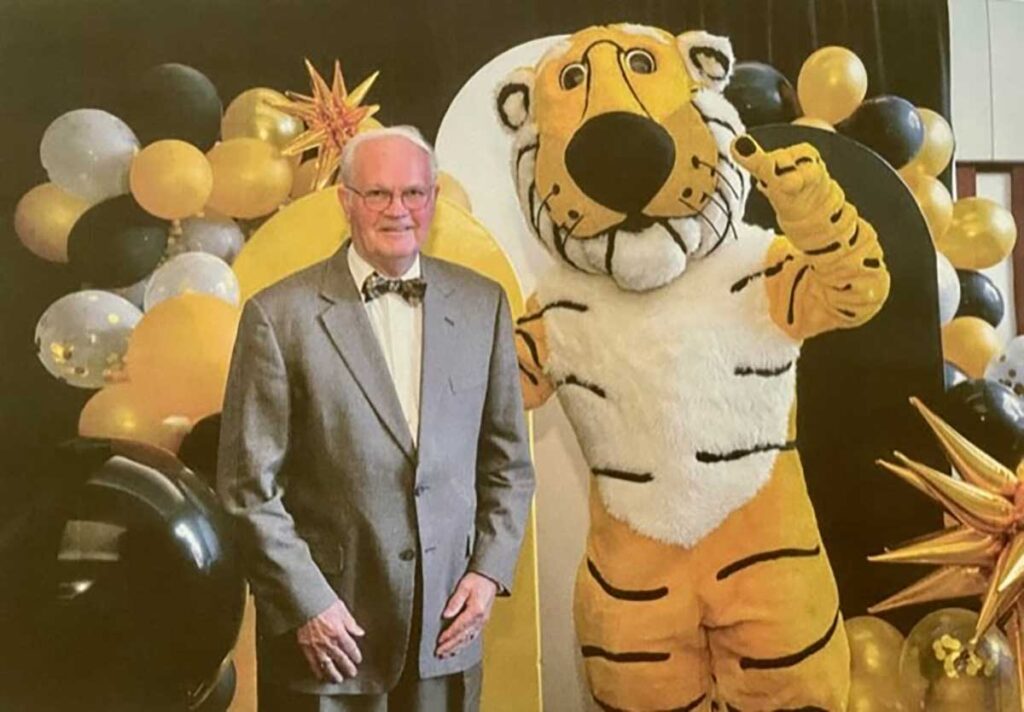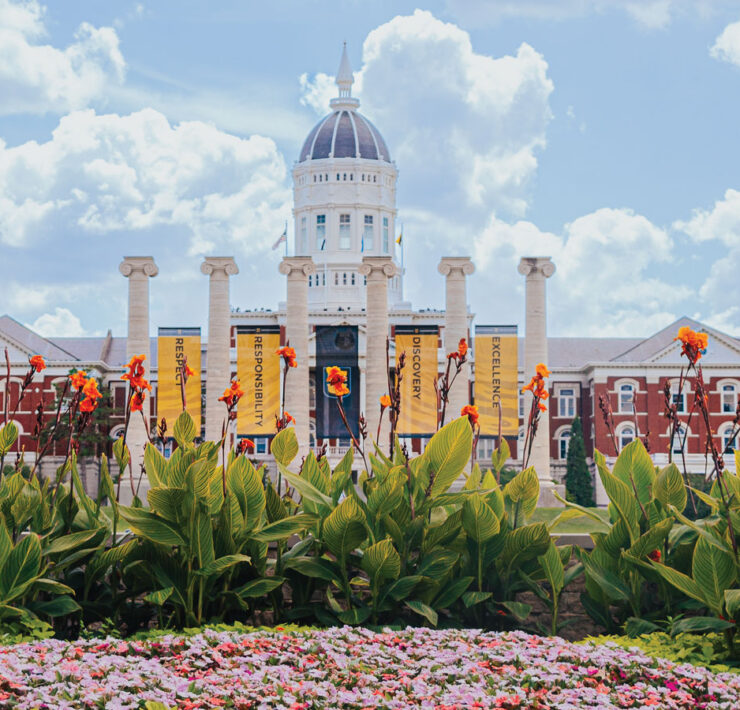Mizzou in the ’60s: Down Memory Lane

Remembering the dives, bars, and roadhouses of Columbia through fuzzy lenses
Columbia, the University of Missouri campus, faces and names of the past, and places that are now only snapshots in memories. It was the 1960s and Mizzou chem/engineering student Steve Mosier was soaking it all in — even after the coeds were in by their 10:30 p.m. curfew.
The names included Hi Simmons and Dan Devine, and a bartender named George. The preferred drinks were Falstaff, Schlitz, and “some nasty mixes of vodka and bourbon” mixed in 7-Up and Fresca. The places included The Stein Club (where you’d find George), the Coronado, the Heidelberg, The Shack, Uncle Clem’s, the Dew Drop Inn — and those are just a few in this timeless collection of memories from Stevbe Mosier, Mizzou SAE, Class of ’61.
This is part one of a three-part series.
PART 1
This is a trip down memory lane during the ‘60s. Those were interesting days. Girls were home by 10:30 during the week, the stroke of midnight on Friday and Sunday. The spring days included nearly two thousand Army, Air Force, and Naval ROTC cadets on parade in the Quadrangle. Those years, “before Vietnam” parades were almost preceded by a howitzer cannon shot, and a dead pigeon falling from Jesse Hall as a starting point. Those days were punctuated by the Berlin Wall built in 1961, the later Cuban Missile crisis, and the notion there might really be a need for the fallout shelters and caches of food and water stamped with the Civil Defense logo in The Elmer Ellis library.
It was also the time of the assassination of JFK — for those of us there, a somber walk across campus after canceled classes, seeking news on black and white TVs and the local radio, and from the J-school. There were also football teams from Dan Devine, a host of class athletes, and NCAA baseball successes by Hi Simmons’s Tigers, perhaps the only one ever by a school not blessed by a southern climate and state-of-the-art (for the time) practice facilities.
There were also negative credit hours for those cutting classes –- before or after holidays, like Thanksgiving, Christmas, and Easter.
The draft was there. Dropping out of school for any reason could lead you to an all-expense paid visit to foreign lands. It could and did happen. And there was also a chance to experience the dives, bars, and roadhouses of Columbia. Worth noting, Columba went wet in ’65: cocktails were available, but the main alcohol in Columbia was tuned to Bud, Stag, Falstaff, Schlitz, and some nasty mixes of vodka and bourbon, mostly based in 7-UP, Fresca, and a Hawaiian punch concoction that varied in lethality as the night went on.
It was said by some that the call for liquid refreshments at Tiger football games was a shout for “set-ups” to lighten up the Jack Daniels that might, just might have found its way in the deep purse of a coed on the way to the stadium.
And then there were the dives, bars, and roadhouses of Columbia. A very inexact survey of Mizzou students in the sixties would probably show the vast majority were below Missouri’s legal age for consuming alcohol. It will no doubt show a significant number of Mizzou students were finding a way to have a beer in a local establishment or a hand-crafted, mixed drink at a social occasion in a fraternity, a dorm room, or a local watering hole.
It is true. My friends have told me so. So, I believe it.

How do you rank dives? Subjectively, at best. Probably one dividing line was whether coeds were accepting and willing to darken the door of an establishment. This seems easy, but it is not. Some places were more like roadhouses, or nightclubs, with music — live in many cases, not always good. Coeds could be found there, sometimes traveling with friends at the start and later joining new or familiar male friends.
Examples of this could be the Coronado or the Stables. Beer available, mixed drinks concocted by a shot of Jack or Smirnoff in the soft drinks, and ice available for “set-ups.” Places like this were not dives or bars; roadhouses, maybe. They might be the equivalent of internet chat rooms of the day. Except they were life. Really live and personal, real faces, not FACETIME.
Dives were places that were dark and of low light. Beer on draft, maybe Bud or Schlitz in a bottle, but that was more expensive; pitchers were economical and easy to share. Even if coeds were on the premises if the decorum was right. I remember or have heard of a dive about a block from the Columbia courthouse. It was mostly local, but after a good Friday touch football game a team or teams might show up for some hard-earned brews after a sweaty scrimmage.
The Mizzou patrons kept an appropriate distance from locals, had a pitcher or two, and headed back for Friday dinner and likely prepping for a date later that evening. It was rare, but I have heard of several occasions where the guys would invite a local for dinner at the fraternity and offer him a priority seat next to the house mother. Community relations you know. No kidding. I have heard it happened.
So, the defining line between a dive and a bar was fuzzy. For example, a favorite was the Stein Club, adjacent to the Tiger Hotel. I can’t remember the local clientele, but I do remember wall-to-wall students on a Thursday night. Thursday seemed to be a practice Friday, with major attendance after the library closed. Maybe a few girls were there for a short one before heading back for the weekday curfew, accompanied by an escort to the dorm or sorority house. If they were headed to an apartment, well, that is another story.
The majority of the clientele were guys. For a buck you could get a cheese plate (brick cheese, with saltine crackers) and a draft Bud. Maybe one more, for a quarter. Twenty-five cents, then home for the evening. Great way to let off steam after the better part of the week in class or hitting the books at one of the campus libraries.
You can’t discuss the Stein Club without discussing two things: game day Saturdays and George. Recall, there were no lights in Faurot Stadium so the warm-up for the game started around 10:30, or when the Stein was opened for business. The crowd was pretty wall to wall, mixed with alums and students, often dads and their offspring having a few glasses of draft before heading off to pregame lunches at sorority and fraternity houses or local places like the Heidelberg (more on that later).
Crowds were such the taps ran continuously until the movement to lunch, or the stadium thinned it out drastically. (By the way, the sixties were BTG — Before Tail Gate). By about two o’clock, or just before game time, it was lightened considerably until post-game activity picked up, based on a win or loss. Dan Devine’s teams won often. Post-game business was good.
And then there’s George. Small, grizzled character. He could have held his own at Cheers or any bar I’ve ever known. It seemed he had a stogie, lit or unlit in his mouth all the time, never hampering his ability to “keep ‘em coming.” Not so many cheese plates on game day, too busy to cut and serve food.
My own personal memory of George was when I asked for my traditional free birthday beer. When I showed ID he grumbled, “You little SOB, you’ve been coming here for more than one twenty-first birthday beer!” It was true. That’s all I’ll say, except that engineering drafting skills had more than academic application.
Let’s move closer to the campus — in fact right to the heart of the campus, across from the south side of Jesse Hall to a section of the street no longer in existence. Along a long block Conley Avenue was what today would be called a strip mall.
Reconstructing the collection of stores there in the sixties is beyond my memories but I do remember several, including one store specializing in clothing for coeds, a shoe store where I bought my first and only pair of cordovan saddle oxfords, a book store competing with the M store (but not very well), and a corner store that was probably the equivalent of a 7-11 of today It had shaving gear for the guys and an assortment of items for the girls, and basic supplies like chips, breakfast cereal, snack items, and subsistence items including bread, packaged cheeses, some cold cuts, and soft drinks.
To be continued …
Watch for Part 2 of this series next Wednesday, September 20, at comomag.com. Steve reminisces about the Dew Drop Inn, the Falcon Athletic Club, the Daniel Boone Hotel, Uncle Clem’s, the Minute Inn, and much more.
Do you have a memory or two (or more?) of these watering holes? Do you have photos to share with our readers? Please email your memories and/or photos to [email protected].
ABOUT THE WRITER
Steve Mosier is Missouri born and a Mizzou Chem Engineer grad, Class of ’61. He met and married Pat Saunders at school. She was the honor grad, Steve graduated. He earned an AFROTC commission and flew Phantoms and Eagles for twenty-seven years and later worked for MCAIR and Boeing for another fifteen. While he was doing what he loved, Pat taught, counseled, and mentored young people at the nine places they lived in the States and Germany as well.
They have one daughter, Megan Mosier Ireland. She and her husband, Bill, and grandson, Liam live in Indian Hills, a short six miles from Steve’s home in Marietta, Georgia. For many years Steve played golf but gave it up when his scores often exceeded the temperature on a moderate day.
He enjoys reading, writing, history and travel, and sampling beer. There is an old saying: “You can’t be a fighter pilot, and grow up.” He agrees. Why would you?








